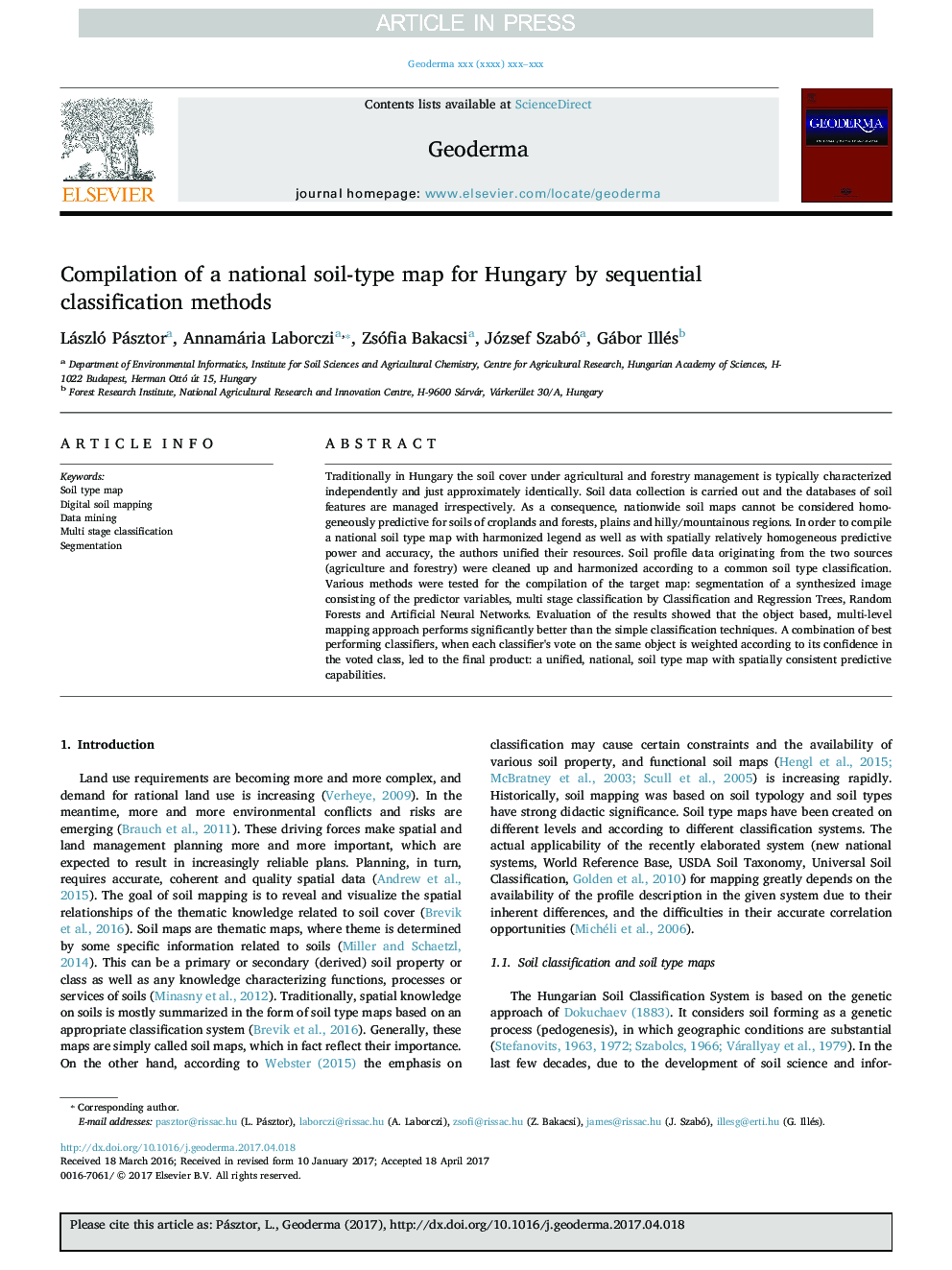| Article ID | Journal | Published Year | Pages | File Type |
|---|---|---|---|---|
| 8894393 | Geoderma | 2018 | 16 Pages |
Abstract
Traditionally in Hungary the soil cover under agricultural and forestry management is typically characterized independently and just approximately identically. Soil data collection is carried out and the databases of soil features are managed irrespectively. As a consequence, nationwide soil maps cannot be considered homogeneously predictive for soils of croplands and forests, plains and hilly/mountainous regions. In order to compile a national soil type map with harmonized legend as well as with spatially relatively homogeneous predictive power and accuracy, the authors unified their resources. Soil profile data originating from the two sources (agriculture and forestry) were cleaned up and harmonized according to a common soil type classification. Various methods were tested for the compilation of the target map: segmentation of a synthesized image consisting of the predictor variables, multi stage classification by Classification and Regression Trees, Random Forests and Artificial Neural Networks. Evaluation of the results showed that the object based, multi-level mapping approach performs significantly better than the simple classification techniques. A combination of best performing classifiers, when each classifier's vote on the same object is weighted according to its confidence in the voted class, led to the final product: a unified, national, soil type map with spatially consistent predictive capabilities.
Related Topics
Physical Sciences and Engineering
Earth and Planetary Sciences
Earth-Surface Processes
Authors
László Pásztor, Annamária Laborczi, Zsófia Bakacsi, József Szabó, Gábor Illés,
